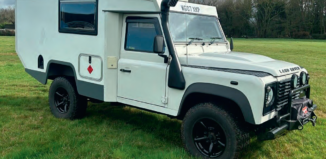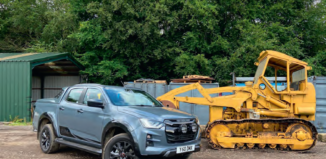 You wouldn’t put your car in a dishwasher, but that’s exactly what Nissan does with every new model it launches. Of course, you can’t fit an actual Qashqai crossover in a kitchen appliance… which is why Nissan’s European Technical Centre has a scaled-up version that can house a full-sized vehicle.
You wouldn’t put your car in a dishwasher, but that’s exactly what Nissan does with every new model it launches. Of course, you can’t fit an actual Qashqai crossover in a kitchen appliance… which is why Nissan’s European Technical Centre has a scaled-up version that can house a full-sized vehicle.
Thousands of litres of water are sprayed at the exterior of a car from every angle, and the process is accompanied by a fingertip inspection to ensure the highest quality in waterproof sealing. Also known as the monsoon test for obvious reasons, it takes place several times during the engineering development of all cars and vans, right across Nissan’s wide range.
Initially, 24,000 litres of water rain on to the car. During the most dramatic part, more than 1,000 litres land in just 15 minutes – equivalent to a metre of rainfall.
Engineers at Nissan’s state-of-the-art facility – at Cranfield, UK – could easily have created this test to be fully automated. But the rigorous nature of the development program, as well as the world’s weather, means that’s simply not demanding enough. The process requires Nissan technicians to attack the vehicle’s seals with a jet washer, specially engineered to operate at pressures as extreme as 150 bar. That’s considerably more powerful than many popular domestic units, which operate at 110 bar.
Carl Sandy is one of the Nissan engineers who have helped develop the punishing test standards. He explained: “Another member of the team will be in the car with a high-definition endoscope to see inside the panels, looking for even the tiniest drop of water that may have made it through.” Such is the attention to detail that Carl’s team will even strip out the whole interior to confirm that there is no water coming in.
During the whole program – the monsoon test and jet-wash – up to 30,000 litres of water are used. That’s equivalent to more than 2,000 times the amount used in an average domestic dishwasher cycle.
Such frivolous use of water may seem wasteful, but crucially not a single drop goes down the drain. It’s filtered back into a giant tank, ready to drench the next car that comes through the chamber. Recycling the water is just as important as keeping customers dry.
Nissan’s test standards are sufficient for the relatively modest climate and roads of Western Europe, but are also robust enough for more extreme environments.
Carl added: “Rigorous testing is important because not every market is the same. For example, in Russia, commercial jet washers run at a higher pressure to cope with road dirt. Through continuous evolution of test standards, we make sure that our cars stand up to the most demanding driving requirements in Europe. ”


